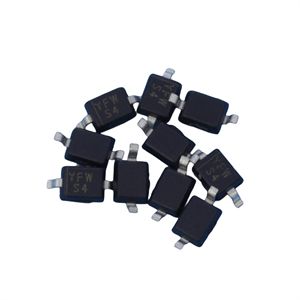Date:2024-10-09 Categories:Product knowledge Hits:449 From:Guangdong Youfeng Microelectronics Co., Ltd
How is the fast recovery diode TRR defined
The characteristics of fast recovery diodes are mainly reflected in reverse recovery diodes, which is also the difference between fast recovery diodes and other diodes. What is the definition of a reverse recovery diode?
The biggest difference between fast recovery diodes and ordinary rectifier diodes is the reverse recovery time of fast recovery diodes. How is the reverse recovery time of a fast recovery diode defined? Below, we will popularize the basic knowledge for everyone:
The definition of fast recovery diode reverse recovery time (trr) is the time interval during which the current transitions from forward to a specified low value through zero. It is an important technical indicator for measuring the performance of high-frequency freewheeling and rectifier devices.
In a fast recovery diode, IF is the forward current and IRM is the maximum reverse recovery current. Irr is the reverse recovery current, usually specified as Irr=0.1IRM. When t ≤ t0, the forward current I=IF. When t>t0, due to the forward direction on the rectifier device
The voltage suddenly changes to a reverse voltage, causing the forward current to rapidly decrease. At t=t1, I=0. Then, a reverse current IR flows through the rectifier device, and IR gradually increases; At time t=t2, the maximum reverse recovery current IRM value is reached.
Afterwards, under the action of forward voltage, the reverse current gradually decreases and reaches the specified value Irr at t=t3. The reverse recovery process from t2 to t3 is similar to the discharge process of capacitors.
It can be seen that parameters such as reverse recovery time form a gap compared to fast recovery diodes and ordinary rectifier diodes.

Previous: Classification, Structure, and Principle of MOSFET
Next: Using voltage inspection method to quickly locate fault points in integrated circuits